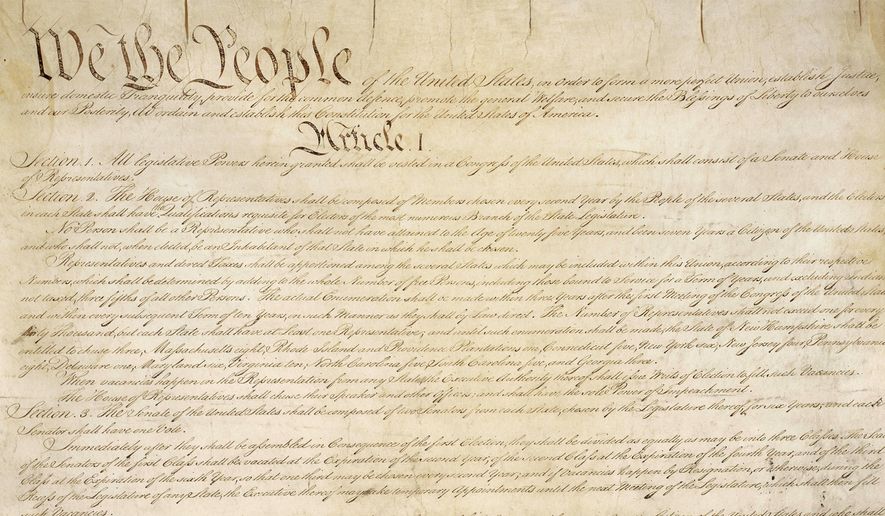OPINION:
Editor’s note: This is one in a series examining the Constitution and Federalist Papers in today’s America.
Every day we are reminded that the states are going their own way. Some are outlawing transgender procedures for minors, while others are declaring themselves transgender sanctuaries. Just about every social issue — and economic issue, such as the fate of state income taxes — has become a political football.
All of this, of course, is exactly as the Founders intended. As James Madison put it, “The diversity in the faculties of men” guarantees that there will be inequality, and from that inequality, class differences and all manner of political strife.
So. what was the solution? Compartmentalization, so that the ship of state has the same structural safety feature as a ship at sea. Happily, compartmentalization was already a feature of American life, in the form of the original 13 states. Now all that was needed was for the Constitution to formally accommodate this diversity within an effective nation-state.
The Founders got to work. Arguing in favor of the Constitution in 1788, Alexander Hamilton declared that the people of each state would know best and that “on these principles, the attachment of the individual will be first and forever secured by the states governments.” But not everyone trusted Hamilton or others who were thought to be fond of centralized power. So, in 1791, the American people, working through their respective states, ratified the 10th Amendment, thereby ensuring the principle of states’ rights, also known as federalism.
States’ rights took a hit in the Civil War, when the South refused to take the deal that President Abraham Lincoln offered — stay in the Union as slave states. Lincoln’s hope, of course, was that the evil institution of slavery would wither away. Yet after the Civil War, Lincoln’s pick to be chief justice of the United States, Salmon P. Chase, wrote, “The Constitution in all its provisions, looks to an indestructible Union, composed of indestructible states.”
Today, some worry that the red-blue divisions in the U.S. are so deep that we could see another civil war. But here’s why we won’t: federalism, aka states’ rights. You see, if someone is unhappy in one state, he or she can move to another state. So today, Republican Gov. Ron DeSantis hails his home as the “free state of Florida,” while California’s Democratic governor, Gavin Newsom, beckons Americans to find freedom in his state.
Who’s right? Who has the better vision of freedom? That’s for the American people to decide. One way to observe their choice is to see how they vote with their feet. California, for instance, is losing population, while Florida is gaining population. Overall, about 1.5% of Americans move across a state line each year. That’s probably enough population leakage to keep people happy — including being happy with the thought that “those” people are on “their” side of the border.
In the meantime, about the only issue that Americans can agree on is that the federal government is not providing much unity. One-size government does not fit all. As recently as three years ago, blue states seized every opportunity to block the policies of then-President Donald Trump. For instance, then-California Attorney General Xavier Becerra, a Democrat, sued the Trump administration more than 100 times. In 2021, President Biden appointed him secretary of health and human services.
Not surprisingly, once installed in Washington, Mr. Becerra proved just as much of a lightning rod as his Republican predecessor. These days, it’s red states that are suing him and the rest of the Biden administration. If Republicans were to win the White House in 2024, it’s the blue states that would once again put on their suing shoes.
This is diversity in action. Republicans in Republican states have their vision of the good life, and Democrats in Democratic states have theirs. And for those who don’t like where they are, it is easier to switch locations than to fight.
A kind of red-blue homeostasis has set in.
So, its differences notwithstanding, the country stays together. That’s a tribute to the federalist architecture of the Constitution: Red states can be red, and blue can be blue — in the same country, and not kill each other. Not bad!
If you see a Founder, give him a hug.
• James P. Pinkerton is a former White House domestic policy aide to Presidents Ronald Reagan and George H.W. Bush.





Please read our comment policy before commenting.